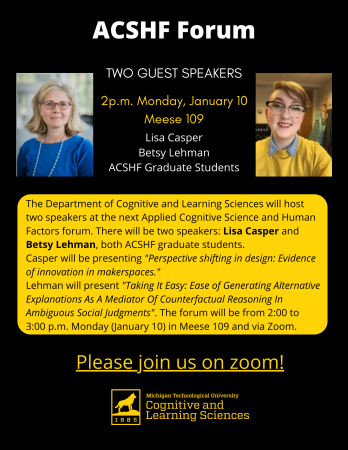I’m Emma DeBaeke, I graduated in spring 2021 from MTU with a Bachelors of Exercise Science and a minor in Psychology. The research and the anatomical-based program have given me the perfect foundation for the next chapter in my life, Physical Therapy school. I have just started school at the University of Michigan- Flint in their DPT program. Personally, I feel as if U of M has been the right choice for me because of the ability to live closer to my family, the PT Heart clinic, and the amazing professors. However, MTU will always be in my heart.
I wouldn’t be who I am today without my experiences at Tech. With Michigan Tech being so far from my home town it helped me grow. It took a lot of tenacity, determination, and help from the Chemistry Learning Center to make it through my first semester. I also couldn’t have made it through without the supportive community at MTU. I have had numerous occasions where people have helped me shovel out my car from the snow, and I have run into countless alumni downstate who are always so kind.
Throughout my time at Tech I was on the rowing team, a Resident Assistant in DHH, and an Athletic Training Intern. I am still active in the MTU community as a sister of Delta Phi Epsilon. I personally enjoy being busy and these roles allowed me to either give back to the community or better myself personally. I know preparing to apply for graduate school can be stressful. I believe when preparing your resume it’s important to find activities that you enjoy to fulfill the graduate program’s recommendations and help you stand out during interviews.










